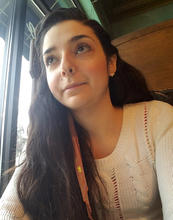
Helen will be presenting her paper at the 32nd Annual Multi-Ethnic Literature of the United States Conference (MELUS), which will take place May 3-6, 2018 in Las Vegas, Nevada.
From Helen:
MELUS is a seminal conference in my field of U.S. ethnic and indigenous literatures, and I have not previously attended. The annual conference will allow me to engage with the work of young and more seasoned scholars who will present on the study and teaching of Latino, Native American, African American, Asian and Pacific American, and ethnically specific Euro-American literary works and cultural contexts. Additionally, I will receive invaluable feedback on my paper, which I plan to develop into my dissertation. In that longer project, I will compare Southeast American Indian, Palestinian American, and Western Armenian American literatures and assert that migrating memory work engendered by removal and dispossession needs to be studied more fully, on its own terms, and in its own terms. The title of my paper presentation is: “Transnational Waterways and Transformative Power: Lessons from Linda Hogan’s Solar Storms (1995) and #NoDAPL Water Protectors.” I will crochet together lived experiences of turbulent waters, referring to the U.S. Dakota Access Pipeline project and Standing Rock Sioux Water Protectors’ reflections in Vice TV’s “Red Power: Standing Rock, Part II” (2017), with creative remediations of the past, referring to Chickasaw author Linda Hogan’s novel Solar Storms (1995). I argue that through her depiction of the repercussions of building a hydroelectric dam on the U.S.-Canada border, Hogan situates early settlers’ decimation of life forms in a larger trajectory of structural violence that weaves through contemporary nation-state governments’ transformation of water as life into a tool to continue to dispossess indigenous peoples along transnational waterways. Hogan’s literary depictions of water, I assert, help theorize two concepts and can serve as basis for a methodology that unpacks links between past and present sites, histories, and assertions of indigenous presence in the face of erasure, as with the #NoDAPL movement. First, the mobility of water offers a framework for mapping the multilayered spatial and temporal relationalities between indigenous peoples within the North American continental landmass. Second, water’s ability to feed from one source into another offers a model of connective and resistant memory work that is one, based in the cross-referencing of histories of collective violence and that two, arises during succeeding displacements of indigenous peoples.